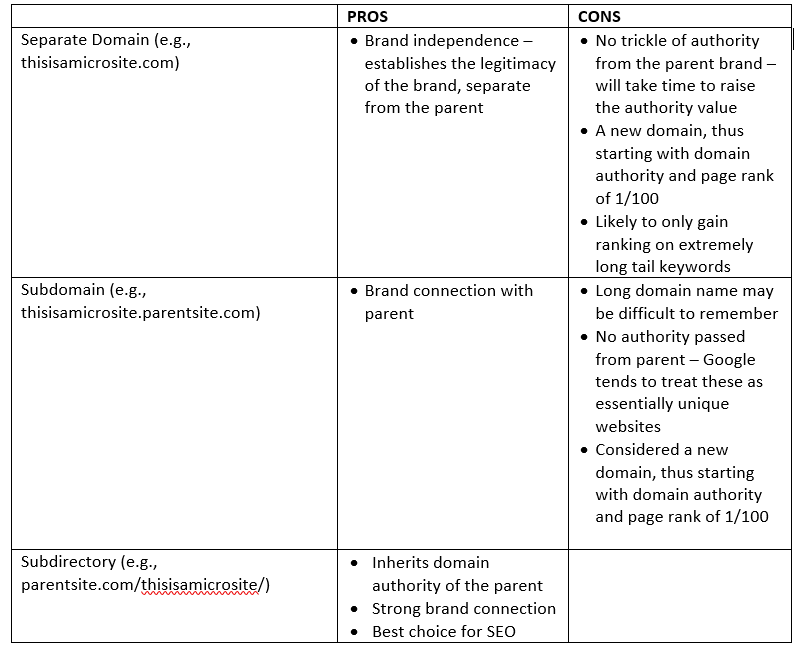We have all seen them – a site that is part of a larger brand, yet looks different and acts as its own entity. This is referred to as a microsite, used by organizations to present information that is separate from the main website and perhaps present a different or co-branded concept. The most common uses of a microsite include:
• Raising brand awareness
• Promoting offshoot brands
• Raising awareness for an event or promotion
• Launching a new product or service
• Building a subscriber list
Options for Microsite Creation
Common thinking is that a microsite needs to be its own domain, however other options for a microsite include use of a subdomain or a subdirectory of the main site. Depending upon the goals for the microsite, there are pros and cons associated with each of these methods.
Separate Domain
Creation of a separate domain such as thisisamicrosite.com would provide brand independence and establish the legitimacy of the brand, separate from that of the parent. As a new domain, the site will not gain any authority value from the parent, and beginning with domain authority and page rank of 1/100 will require time for search engines to connect the relevance of the content with search queries. If, and only if, there is sufficient unique content and time for the site to gain value with the search engines should this method be used. In other words, if launching a limited three-month campaign, this is not the ideal method.
Subdomain
Use of a subdomain such as thisisamicrosite.parentsite.com will provide the connection for users between the new brand and the parent. While Google has made improvements in discerning the connection between the sites, the subdomain is still considered a new domain and will not inherit any of the parent’s authority. The potentially lengthened domain name can also be cumbersome and difficult for users to remember.
Subdirectory
Creating the microsite as a subdirectory of the parent site, e.g., parentsite.com/thisisamicrosite/ is the ideal option for SEO value. This provides a strong brand connection and inheritance of the parent site domain authority.
The bottom line
Creating a microsite can be a valuable move for an organization. In doing so, attention needs to be paid to the goals for the site and method utilized to create the microsite, especially when it comes to SEO.

Interested in learning more about microsites and SEO? Read more from our blog, View from the Charles:
Location does matter – when it comes to organic search results
What You Need to Know About Google Symptom Search
